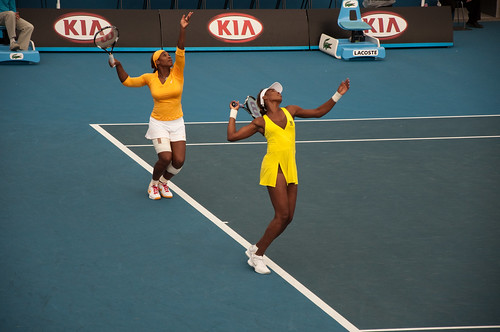 I’m writing this from the Novotel Twin Waters Resort on Queensland’s beautiful Sunshine Coast. It’s a hard life, I know, but someone has to do it. It’s been a spectacular day here, and I’ve managed to fill it with a bike ride along the beach, drinks at the bar, and lazing around the poolside area, so it hasn’t really been too hard to take. No need to feel sorry for me. I’ll be ok.
I’m writing this from the Novotel Twin Waters Resort on Queensland’s beautiful Sunshine Coast. It’s a hard life, I know, but someone has to do it. It’s been a spectacular day here, and I’ve managed to fill it with a bike ride along the beach, drinks at the bar, and lazing around the poolside area, so it hasn’t really been too hard to take. No need to feel sorry for me. I’ll be ok.
But it hasn’t all been just lazing around the pool and soaking up sunshine… The real reason I’m here was to take part in the first Interactive Teaching and Learning Masterclass conference, run by the good folk at IWB Net. I had the privilege of being involved as a presenter, leading one of the Cohort sessions and doing the keynote on the Saturday.
The ITL Masterclass conference attempted to be different to a typical conference. Most traditional conferences have a pretty standard format… There is a keynote address in the morning, followed by a series of workshops or breakout sessions that are all organised well in advance. At these traditional conferences, delegates typically register, turn up, and hope that some of the breakout sessions will be useful, which, often, they aren’t. Despite the best intentions of conference organisers, making sure that delegates get what they need from a conference event is difficult, since a) most times, the delegates don’t really know what they need, and b) once a conference schedule is in place it’s hard to have the flexibility to adapt it to people’s needs on the fly.
If you’ve been to many conferences before, you’ll know that, often, many of the best conversations and networking happens in places and at times that have nothing to do with the organised part of the event. Conversations over breakfast and dinner, at the bar, in the lift, during the breaks… often this is where the best stuff happens. It’s as though the “conference” stuff is the reason to get the people together, while the “un-conference” stuff is where they do the real connecting and learning.
This idea of the “un-conference” has grown in popularity in recent years, with the rise of Teachmeets and other un-conference style gatherings. A true un-conference event is highly un-organised, very much made up as it happens. The point of these is to not make it too organised or too rigid, and to try to find ways to make all the “incidental learning” the main focus of the conference and not just a valuable byproduct. Proper un-conferences can be quite chaotic to anyone not used to them.
It’s a double-edged sword of course. If you have too much structure in a conference it becomes inflexible and may not be able to meet the needs of the attendees. But if you make them too unstructured they can easily degenerate into a mess where attendees get frustrated. Some people like, and need, structure. Others prefer a more open and agile approach. What would be ideal is a conference that had the best of both worlds – enough flexibility so that attendees could make sure it met their needs, diverting and exploring into areas of interest to them, but still with enough structure so that it didn’t just feel like a bunch of people making stuff up as they went along.
I thought that the IWB Net team did a great job of trying to get the balance right for this event. There were five main aspects to the conference:
- a keynote address each morning to set the theme for the event
- a series of “cohort sessions” where a group of attendees could spend time doing a 6 hour “deep dive” into an area that interested them,
- a series of pre-prepared workshops on a range of topics,
- a series of un-conference workshops based on topics suggested by, and voted for, by the delegates during the event
- breakfasts and dinners (and the bar afterwards!) where conversations flowed freely
I’ve been to regular conferences where everything is prepared in advance and have sometimes found them frustrating because they don’t always cover what I want. And I’ve been to un-conferences where nothing is prepared in advance and have sometimes found them equally frustrating because they can be just too disorganised. As a hybrid conference model that sits somewhere between these two extremes, I must say I really enjoyed the format for the ITL Masterclass event.
I arrived at the event on Thursday night and went straight into a meeting where we discussed the possible topics for the un-conference sessions. A list was made, groups were organised, and volunteers stepped up to facilitate the sessions.
 Friday morning kicked off with a keynote address from Steven Bradbury, Australia’s first Winter Olympic Gold medalist, talking about the idea of peak performance in sports. Steve is best know for his controversial win at the Salt Lake City Winter Games where he won gold after a massive crash that took out all the other competitors in the final. It was wonderful to hear him talk about his “12 years to become an overnight success”. His passion for the sport, his determination to succeed, the stories of his own setbacks and disappointments, all made for a really engaging and interesting talk. We got to hold both his Gold and Bronze Olympic medals, and I found the story of his journey to be very inspiring. The common theme in his story was passion, perseverance, persistence, never giving up, and realising that the gold medal was not a reward for the 30 seconds of the race, but for the decade of hard work that led up to it.
Friday morning kicked off with a keynote address from Steven Bradbury, Australia’s first Winter Olympic Gold medalist, talking about the idea of peak performance in sports. Steve is best know for his controversial win at the Salt Lake City Winter Games where he won gold after a massive crash that took out all the other competitors in the final. It was wonderful to hear him talk about his “12 years to become an overnight success”. His passion for the sport, his determination to succeed, the stories of his own setbacks and disappointments, all made for a really engaging and interesting talk. We got to hold both his Gold and Bronze Olympic medals, and I found the story of his journey to be very inspiring. The common theme in his story was passion, perseverance, persistence, never giving up, and realising that the gold medal was not a reward for the 30 seconds of the race, but for the decade of hard work that led up to it.
After Steven’s talk, we then started through the various workshop sessions. Some were pre-prepared, some were un-conference style, and we also began the cohort sessions. I enjoyed the cohort idea… A group of people gathered around a central theme, working over 4 x 90 minute sessions to explore a topic in greater depth.
My cohort theme was Lessons from Leonardo: Dealing with Little DaVincis, and was predicated on the notion of imagining how we might teach differently if our classrooms were full of kids that were as curious, inquisitive, inventive, talented and productive as Leonardo DaVinci. Obviously, you’re not likely to have a whole class full of kids that just happen to be as bright and clever as one of history’s greatest geniuses, but I think if we went into our classrooms with an expectation that our students actually were like that, we might approach what we do a little differently. Over the four sessions I tried to facilitate my group through some deeper discussions about their own school, sharing insights and comparing notes. Then we looked at some of the tasks and assessments we ask our students to do, and tried to measure them against the Seven DaVinci Principles, as found in the book How to Think Like Leonardo Da Vinci.
On Saturday, the day kicked off with my own keynote to the group, a talk called Passion, Purpose, Perspective and a Pirate Attitude. In this keynote, I tried to follow on from Steve Bradbury’s talk about what it takes to be a champion sportsperson, and explore a few ideas about what it might take to be a champion educator. It’s always difficult to speak to a group of your peers, especially ones that are clearly already good teachers, but I hope I did the idea justice.
Here’s a copy of the keynote, along with an audio recording I made and then synced up using SlideShare.
The rest of the day was spent mainly with my cohort group, as they worked to create a product or develop skills that they could take back to school and use. Some worked on creating their very own multimedia Credo for Teaching, as a statement of what matters to them as a teacher. Some took the opportunity to develop an assessment task for use with their students to incorporate some of the Da Vinci principles, and some chose to learn Scratch as a way of taking a cross curricula, whole brain, approach to learning. At the end of it all, they were a great bunch of people to work with and they produced some terrific end results.
Between those sessions, I also ran an impromptu Scratch/Picoboard workshop in the hotel foyer (or would that be an un-workshop) and also managed to get around and drop into a few of the un-conference sessions. There was lots to see and do.
Overall, it was a great conference event, and I thought the hybrid format worked really well. Having the structure, but also the flexibility, was a nice balance, and I hope they continue to explore this new format. A special thanks to the team at IWB Net for inviting me to be part of it.
I didn’t leave right away, and instead stayed another night before catching a late flight home. On Sunday I got to hang out with a few other folk who stayed on for the extra day, and after a late breakfast, Jan Clarke from WA suggested we rent a couple of pushbikes from the resort and ride up the beach to Mount Coolum and back. (OK, so riding along the beach was my idea… I’m not sure we were supposed to do that, but it sure was fun.)
I’m off to Canada tomorrow to spend time with Linda’s family and friends, then down to Philadelphia the following week for the ISTE conference. I just love being a connected educator! 🙂


 It’s not just politics either, it happens in other fields of endeavour as well. In sports, the Williams sisters,
It’s not just politics either, it happens in other fields of endeavour as well. In sports, the Williams sisters,